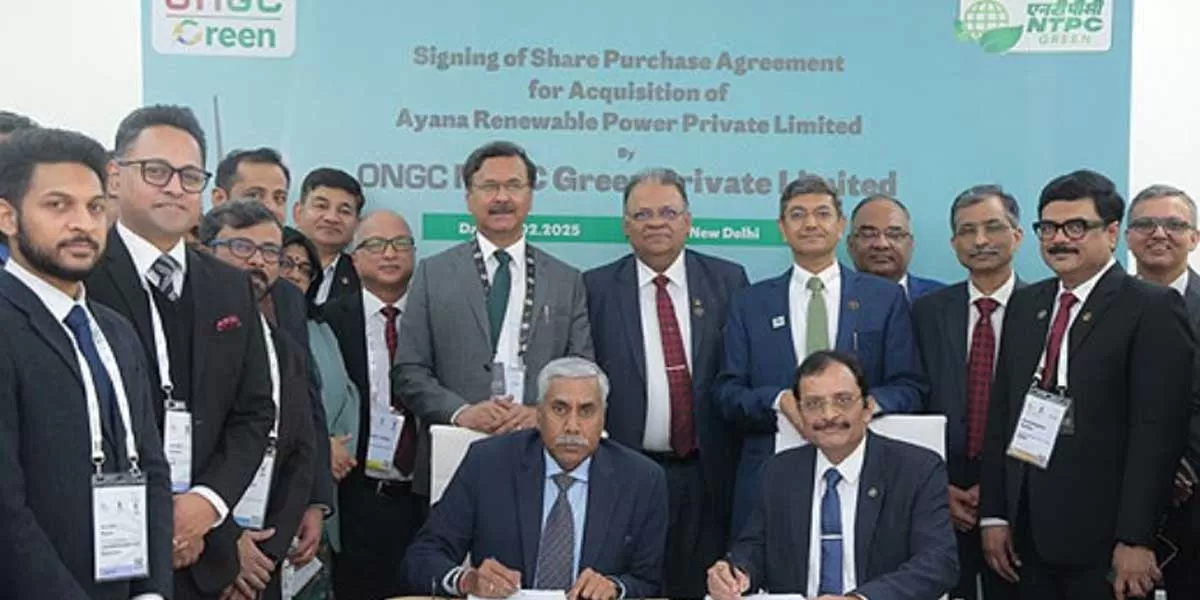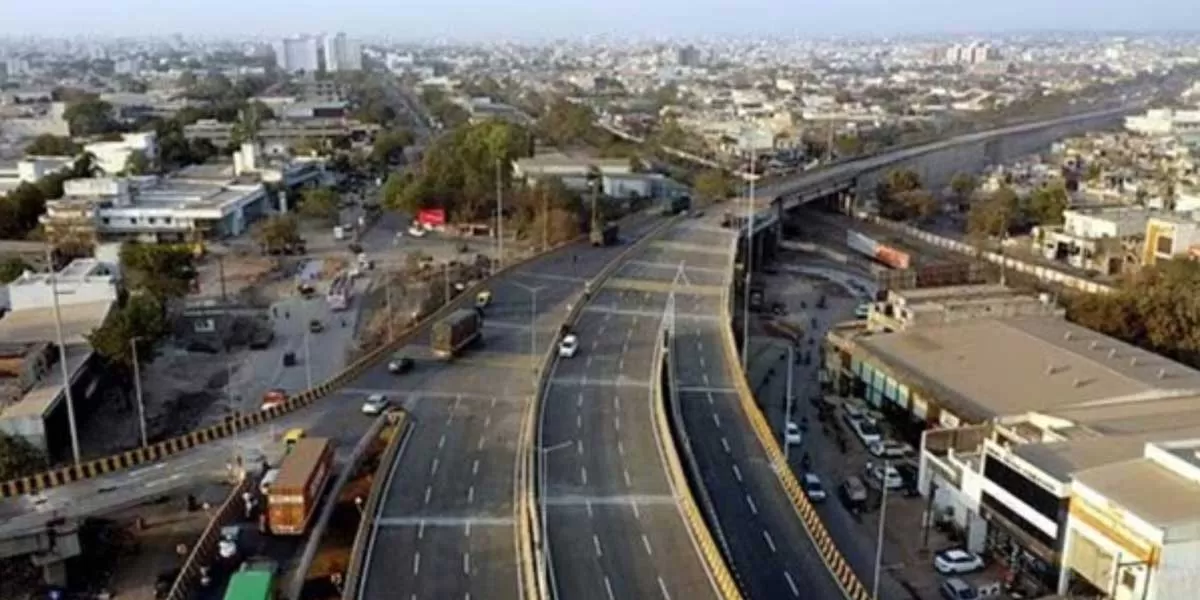Industrial real estate is fast emerging as the go-to asset class for investors and developers, as demand for SEZs wanes and India’s consumption and e-commerce story gets a boost.The industrial and warehousing sector is going through a transformation. From a defragmented and unorganised structure a few years ago, it is becoming formal and organised, with interest from national and global developers and funds.Currently, industrial and logistics parks have two different formats, as N Srinivas, Managing Director-Industrial Services, JLL India, explains: Sale or long lease of plots of land, and lease of built spaces.Sale or long lease of plots of land are typically industrial clusters or townships ranging from 300 acre to over 2,000 acre. These are owned by government entities (and include land developed by the state-owned Industrial Development Corporation in different states, such as GIDC, MIDC, SIPCOT, etc) and private developers such as Mahindra World City, Reliance Model Economic Township, Sricity, etc. However, projects under the lease of built-spaces vary from 25 acre to over 250 acre with private developers – IndoSpace, Embassy, ESR, LogosIndia, Ascendas FirstSpace, AllCargo, Musaddilal, FWS, GWC, KRC, etc – being major players. Economies of scaleThe logistics market in India is estimated to be around $160 billion and likely to touch $215 billion by 2020, according to the 2018 Economic Survey.Rajesh Jaggi, Managing Partner, Real Estate, Everstone Group, says, “The overall trend is large-format modern industrial and logistics infrastructure spread across fewer strategically located parks well connected to urban hubs, railways, airports and ports.”Anshul Singhal, CEO, Embassy Industrial Parks, sees the economies of scale as highly advantageous. “Owing to high demand, the size of warehouse boxes is increasing from 50,000-100,000 sq ft to 300,000-500,000 sq ft and turnaround time for each of these PEB structures is as fast as six to nine months,” he says. “At a pan-India level, Grade-A quality warehouse absorption has gone up to 35 million sq ft in the top eight cities alone. Also, an organised developer can look at leasing 3-5 million sq ft per year.” Private developers such as Hiranandani, Panchsheel, Lodha Group and Srijan are considering the sector as an investable grade real-estate asset class and are diversifying to include it among their offerings. Srinivas adds, “Foreign funds-led developers are evaluating different entry strategies such as JVs or JDs, acquisition of an existing portfolio or even platform-level investments in this asset class.”For his part, Jasmine Singh, Senior Executive Director-Advisory & Transaction Services, CBRE, says, “Foreign capital and developers want to do strategic 100-acre plus parks in almost all Tier-I cities.”He adds that a typical 100-acre park would entail an investment of $100 million from a developer and a similar amount from the occupiers. “It will also create direct job opportunities for at least 2,000 people and a similar number indirectly.”Undoubtedly, industrial real estate is an important driver of growth in terms of investment opportunities, exports, job creation and skilling.“A comprehensive and well-planned industrial ecosystem can be sustainable, resource-sensitive and serve professional needs while driving local community development,” says Sanjay Srivastava, Business Head, Mahindra World City, Jaipur & Director, ORIGINS, Ahmedabad.Dr Niranjan Hiranandani, Founder & Managing Director, Hiranandani Group, too, sees industrial real estate emerging as a go-to asset class as demand for SEZs wanes and India’s consumption and e-commerce story gets a boost from the Make in India initiative and implementation of GST. “In a bid to build industrial, logistics and warehousing parks, industrial clusters and townships, there is a rush to buy land across states, something that has not happened since the SEZ frenzy more than a decade ago,” he points out.In the pipeline!With a clear agenda to supply requirements of Grade-A industrial and logistics parks across the country, as stage 1, Embassy Industrial Parks is setting up eight to 10 parks in eight cities, including Mumbai, Delhi, Hosur, Bengaluru, Pune, Chennai, Hyderabad and Ahmedabad. The company recently acquired 60 acre in Hosur between Chennai and Bengaluru to build a 1.3 million industrial and logistic park at a cost of Rs 2.80 billion. Further, there will be more than one park in high consumption markets like Delhi and Mumbai. Over the next three years, the company will build up to 35 million sq ft of leasable area. “We plan to buy land with our committed equity line of $250 million,” informs Singhal. Currently, the company has operational sites in Bilaspur, Gurugram and Chakan, Pune; Farrukhnagar, Sriperumbudur, Hosur and Hyderabad are next in line.IndoSpace plans to build logistic parks across newer geographies such as Ahmedabad, Coimbatore, Sri City (Andhra Pradesh), etc, while expanding in existing markets. Recently, the company entered Gujarat with a Rs 6.50 billion investment. With around 30 million sq ft across developed and under-construction projects, its portfolio includes 30 industrial and logistics parks in nine cities.Mahindra Lifespace Developers has pioneered successful integrated cities under the Mahindra World City (MWC) brand. The two MWCs in Chennai and Jaipur have been developed on the ethos of ‘livelihood, living and life’.“The company’s new brand of industrial clusters, ORIGINS, was launched to address the growing need for sustainable industrial infrastructure,” says Srivastava. Its first project is in North Chennai with a Phase-1 development of 264 acre, a JV between MWC Developers and Sumitomo Corporation of Japan. The second project is near Ahmedabad, with a Phase-1 development of 268 acre, and is being developed along with International Finance Corporation as a strategic partner.For Hiranandani Group, the industrial, logistics and warehousing sector is a natural transition given its proven history in real estate, infrastructure, and the mixed-used integrated township development model. The company’s newly established vertical ‘GreenBase’ will provide logistics and industrial parks that are more customer-centric and build optimisation and efficiency for the end-user.Design trends Modern technologies such as automation, robotics and supply chain management are increasing management efficiencies in warehousing. “Drones and self-driving vehicles are used to support seamless operations,” adds Jaggi. “Robots are used to manage and sort, leading to greater output.” Warehouses by Indospace with super-flat floors are structured such that their vast spaces are unhindered by walls or columns and allow for high stacking of goods and easy manoeuvring of forklifts for storage or pick and pack. “Clients generally ask for a 12-m clear height for the warehouses at the eaves (below services),” shares Singhal. “With more automation, FM2 flooring requirements have increased. And sustainability in lighting has always been important because the percentage of energy attributed to it is quite high.” Also, sustainability principles and flexibility of form or layout are increasingly being incorporated right from the master planning stage, says Srivastava. “The use of technology for planning and managing industrial park operations more efficiently – for example, smart lighting, security and utilities monitoring – is widespread today. MWCs incorporate smart solutions including LED street lighting; energy-efficient buildings; solar PV rooftops; STPs; rainwater harvesting; low-flow fixtures and fittings; e-rickshaws, waste management systems; xeriscaping; and an off-grid solar power plant, among others. Business modelSo, what business approach are developers adopting?Embassy Industrial Parks has adopted the business model of buy, build and lease. “We will invest capital on land and building and charge a rent,” says Singhal. “This is where a corporate can mandate us to build their solution for real-estate needs.” He adds that the general market yield expectation is 10-12 per cent for development projects.IndoSpace leverages its large land bank and pan-India presence to develop parks in industrial and urban hubs. “The ‘build-to-suit’ service offers turnkey solutions, including land acquisition, construction and management of dedicated distribution facilities,” says Jaggi. “Our approach is focussed on creating world-class, plug-n-play infrastructure supported by an enabling ecosystem and skill development support for Mahindra World Cities and ORIGINs,” says Srivastava. “We offer long-term land lease options for a majority of industrial clients to help them build and own their assets for the future. We also work with our enabling partners to offer an alternative for clients looking at industrial or warehousing built to suit (BTS) via rental or op-ex business models.” For Hiranandani Group, the operating model of GreenBase shall include BTS industrial facilities, cold storage, and BTS warehouses for end customers and large 3PL players. As Dr Hiranandani shares, “For the businesses that opt for plug-n-play and need warehousing solutions, GreenBase will offer land acquisition, master planning, optimising design, BTS and a project management consultant.” He adds that Pune (Talegaon), Nashik, Mumbai (Panvel), Chennai (Oragadam) and Kolkata (Durgapur) are where it all begins. The company’s focus is on providing integrated townships where warehouses or industrial units will be supported by social infrastructure amenities. “We expect to develop 10 million sq ft warehouse areas pan-India in the next seven to eight years,” he says.Acquiring landThe cost of land is a vital component in project sustainability, contributing almost 25-35 per cent of the total project cost for an industrial or logistics park. In the case of a warehousing project, Srinivas adds, the investment decision is typically inversely co-related with additional distance covered and cost of land. He also highlights that from the user perspective, key decision-making queries relate to the project site being located before toll gate, location of nearest transportation hub, width of the road, and whether there is a suitable turning radius for trailers.These clearly indicate the market perception on incremental cost of transportation and operational ease. Hence, the right location of a land parcel, with all the requisite attributes, is of primary importance.However, acquiring land is probably the biggest challenge faced by developers, as Srinivas affirms. Unfortunately, in some locations or states, it comes under the purview of local laws pertaining to land ceiling acts, etc. Private developers who follow the model of leasing built spaces are predominantly exploring land parcels between 25 acre and 250 acre depending on the location. Besides, large tracts of land are either acquired from private owners or in a JV with state authorities.“In some cases,” adds Srinivas, “fund managers who are looking for a quick entry in the market are also exploring JVs with developers who have historically acquired land parcels or even small industrial or logistics players.”Investments inThe industrial sector has witnessed strong investor interest in the past few years. In 2017 and 2018, over $7.2 billion has been committed in platform level leads only. “This is just the beginning,” says Srinivas.Both the Centre and state governments are now trying to promote investments in the logistics and warehousing sector. “Some measures include modifying policies to ease land acquisition, making land available for logistics projects under the newly formed logistics policies of various states, and monetising various government-owned land parcels belonging to port authorities, railways and highways through independent implementing agencies,” says Srinivas. Also, an increasing number of PE firms and Indian corporates are foraying into the industrial and logistics real-estate sector. “They are being backed by international sovereign and pension funds focussed on this sector because of its stability,” says Singh. “This would certainly boost quality supply.”He further points to cities such as NCR, Mumbai, Pune and Chennai as major investment destinations, with Bengaluru, Ahmedabad, and Hyderabad also on the investors’ radar.Growth drivers Favourable government policies and strong inherent market demand are key factors driving demand in industrial real estate in the near future.Leasing activity in the sector is primarily driven by “e-commerce, FMCG and retail, who have been key occupiers in the past two to three years,” says Singh. Srinivas sees strong demand from e-commerce, 3PL or logistics, organised retail and auto companies for logistics in the next few years. “In 2018, almost 60 per cent of logistics absorption was by these sectors alone,” he shares. Implementation of policy reforms has also created a profound impact – Singh sees GST as a game-changer here. Also, the grant of infrastructure status to the logistics and warehousing sector has led to increased investor interest.Srinivas also sees initiatives such as Make in India as major influencers. In 2019, the leasing volume for warehousing space is expected to breach the 20 million sq ft mark. And, as the sector witnesses the use of technology, coupled with the government’s reform push, “corporates across sectors will be driven to opt for large, modern and energy-efficient warehouses,” says Singh.- SHRIYAL SETHUMADHAVANIndustrial real estate: Important growth driver in terms of investment opportunities, exports, job creation, and skilling.Automation, robotics and supply chain management are increasing management efficiencies in warehousing.Sustainability principles and flexibility of form or layout are incorporated from the master planning stage.

















